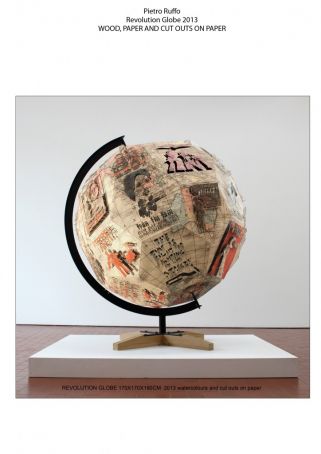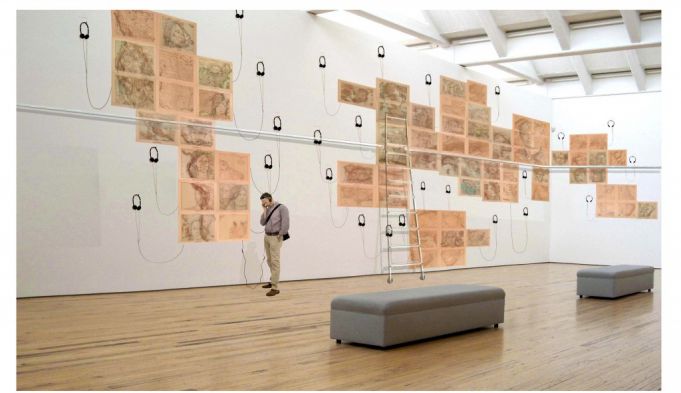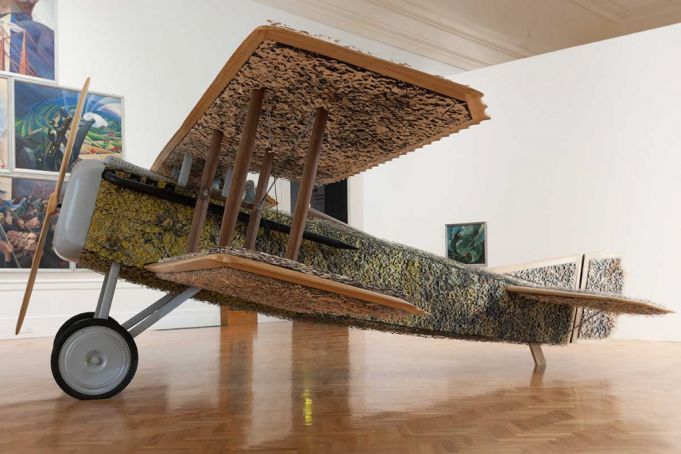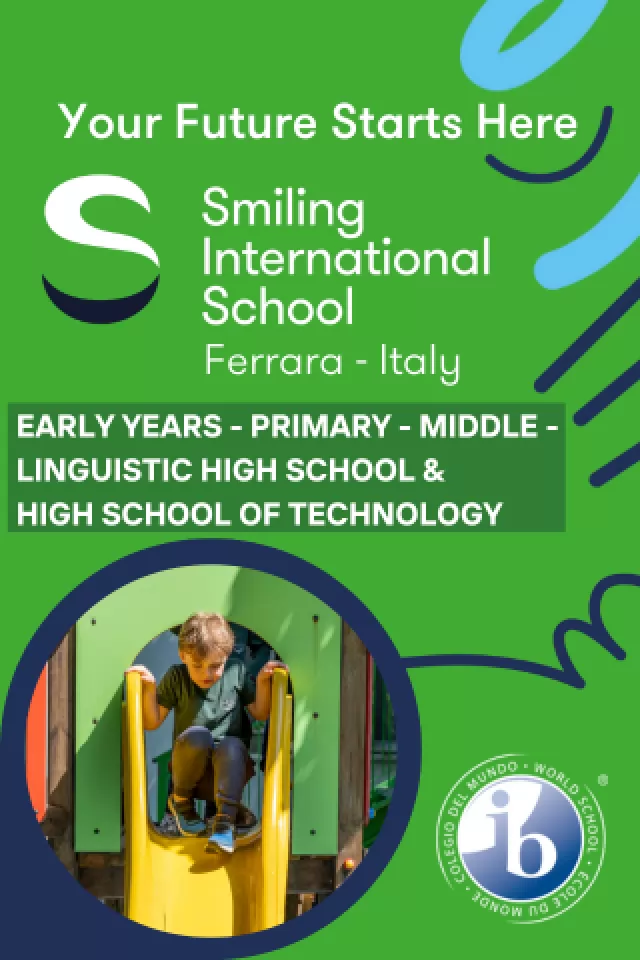Caitlin Frost put some questions to one of the rising stars of the Italian art world, Roman artist Pietro Ruffo
Your work is rigorous, and raises challenging questions about the nature of human freedom. What are you hoping to accomplish?
What I’m trying to do with my work is to study as much as possible a number of themes such as the concept of freedom, the concept of self-defence and the phenomena associated with street protests. These themes are the basis of my drawings; I’m not trying to provide solutions with them, but to formulate some open questions instead.
What project are you working on now?
Right now I’m working on four huge atlases from the late 19th century – a period of great geographic, scientific and ethnographic discoveries by the western world – to learn, to catalogue, to understand what lay behind it, but also with the innate wish to dominate it.
What was the last show you saw in Rome that surprised you? Why?
The Giuseppe Gallo exhibit at the Fondazione Pastificio Cerere in S. Lorenzo. In my opinion Gallo is a master, he manages to move forward continually; the intelligence and the beauty of his work takes my breath away every time.
What is your favourite place to see art?
I don’t have favourite places to see art. I like the classical places like museums, biennials and fairs, or seeing art on city walls or in sculpture parks, but what turns me on most is seeing art in the artist’s studio, that’s the most intense moment for me.
What is your favourite post-gallery hangout or restaurant in Rome?
Definitely Buchetto, the historic pizzeria in the Flaminio area where I used to go as a kid with my Dad and where I now take my son every Thursday.
What is the most indispensable item in your studio?
Paper, pencil, a Stanley knife and lots of patience.
In past works you referenced American philosophers John Rawls and Robert Nozick. Where are you finding ideas for your work these days?
In this period I’m mostly interested in the language of other artists over the last century to express the concept of freedom, or the cry for freedom in political posters, starting from the October revolution in Russia up to Occupy Wall Street. By studying these posters I can create new work inspired by the concept of freedom.
What is the last artwork you purchased?
Artists usually exchange their work. I’ve got some work from a number of artist friends, like Seboo Migone, Maurizio Savini, Patan, Raimondo... The only artwork I’ve ever bought in my life was an oil study of a mountain by Jan Bauer, a superb piece.
What is the first artwork you ever sold?
When I was eight I sold a seascape seen from my parents’ terrace for a new box of paints.
Do you have a gallery/museum-going routine?
Yes. It’s very important for me to see the work of other artists, in galleries or museums or foundations. Every work I see inspires reflections that I can assimilate into my own research.
What work of art do you wish you owned?
The blue Airplane series by Alighiero Boetti.
Where would you go to buy art in Rome?
The Lorcan O’Neill gallery, which represents me as well as other international and Italian artists.
The MAXXI, arguably Italy's most important museum for contemporary art, opened just four years ago. Do you think its struggle to find a role for itself is demonstrative of Italy's struggle with finding a platform for contemporary art? Or do you believe it shows an increasing interest to put Italy and Rome on the the international art scene?
I think Rome, with its various museums of modern and contemporary art and its private foundations and galleries is a very interesting place for contemporary art, even if from the outside it’s not easy to express the message that the eternal city is also a contemporary city. But there’s a lot of energy, and I think it will produce great results.
You live in the historic artist area of S. Lorenzo. For what reasons do you choose to be based in Rome? What are the advantages of working from the 'eternal city’, compared to, say, London?
Well, like I said, Rome is active in the contemporary scene, and I hope to make a contribution together with the artists of my generation. And then I try to do a three-month artist’s residence every year somewhere abroad, so I can get to compare myself with artists from other parts of the world.
Caitlin Frost
SIDE NOTES
Roman contemporary artist Pietro Ruffo was born in 1978 and is based in the capital's S. Lorenzo district.
In 2005 he graduated with a degree in architecture from the Roma Tre university and started to work the Fondazione Pastificio Cerere in S. Lorenzo, an historic artists' residence.
His work deals largely with the subject of freedom and addresses a wide range of social, moral and political issues. He has run art therapy workshops with school children in Beslan who survived the 2004 massacre by Chechen rebels, and has also addressed conflicts such as the Arab Spring.
In 2010 he was selected for a fellowship at the Italian Academy for Advanced Studies in America, at Columbia University in New York, and was awarded the New York Prize by Italy's ministry of foreign affairs. This time served as inspiration for his series Political Gynasium centred on the work of American philosopher Robert Nozick.
Ruffo creates meticulously detailed works using a range of media including drawing, painting, digital photography and video.
The artist is represented in Rome by Galleria Lorcan O'Neill since 2006, and in London by BlainSouthern since 2012
For more information about Ruffo see his website, www.pietroruffo.com.
























